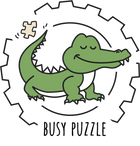Buy Montessori Toys Online Cheaply and in a Wide Range
In the early 20th century, pediatrician and educator Maria Montessori identified that the period from one year to 6-7 years is one of the most critical in a child’s development. During this time, the main task of parents is to awaken a child’s desire to learn. Wooden Montessori materials are designed to develop essential skills and traits such as diligence, neatness, and independence.
Maria Montessori emphasized that all children are naturally eager to acquire new knowledge from birth. It is crucial to create the right learning environment where children can independently explore the world and self-monitor their tasks. The role of parents and educators is to teach children how to use materials so they can choose engaging activities and manage their interaction time independently.
Montessori Toys on Order – Features and Purpose
What Are Montessori Toys?
These are didactic interactive materials aimed at developing children’s skills. Maria Montessori not only designed but also categorized the materials by complexity. To ensure the system works effectively, all toys should be readily accessible to children. It is important for the child to self-check the correctness of each task.
Interactive toys provide a foundation for the next stages of a child’s development. Through play, children learn to perform simple tasks while developing their individuality. Each toy is designed for a specific age, allowing children to gradually acquire new skills and knowledge.
Design and Principles of Using Montessori Learning Materials
They are primarily made from natural wood. These toys are simple and intuitive, without unnecessary brightness or multifunctionality, which could confuse or distract children. Most toys involve sorting small items, threading them onto ribbons, elastics, or cords, and recognizing objects by touch based on size, texture, and shape. This allows children to learn in a simple, unobtrusive way, without competition or mandatory actions.
Montessori Toys That Holistically Develop Children
Key Skills Developed Through Montessori Interactive Materials
Through play with didactic materials, children learn without pressure or coercion. Each child has the right to choose the interactive materials that interest them independently.
Games with small objects provide several key benefits:
- Discovering talents. Children begin to exhibit their unique abilities and interests.
- Fostering curiosity and appreciation for the environment. Children develop curiosity and learn to value and understand the world around them.
- Learning specific activities. Kids acquire new skills and activities that will be useful in the future.
These materials also help develop additional, equally important qualities:
- Discipline and willpower. Children learn self-control and consistency in actions.
- Perseverance. Kids develop the ability to focus and complete tasks.
- Logical and spatial thinking. Children grasp the basics of logic and spatial perception.
- Language skills. Games enhance language development.
- Attention. Children learn to focus on details.
- Memory and creativity. Cognitive and creative abilities are nurtured.
- Fine motor skills. Dexterity with small objects improves.
- Sensory skills. Kids learn to distinguish textures, shapes, and sizes.
Montessori toys play an exceptionally important role in a child’s development. They help children acquire key skills and qualities necessary for their future. Through simple and understandable activities, kids learn independently, promoting harmonious development and preparing them for future stages of life.
Montessori Busy Boards and Other Popular Developmental Toys
Popular Montessori Toy Options
These toys can be used for both individual play and group activities. The most commonly used materials include:
- Busy Boards. These boards feature various tools that teach children daily tasks.
- Fastener Games. Sets include zippers, buttons, snaps, buckles, laces, and pins, helping children learn to use fasteners found in everyday clothing.
- Stairs. Made up of rods of different sizes. Children learn to distinguish objects by thickness and understand spatial relationships.
- Rods. A set of sticks of varying lengths. This game helps children grasp the concept of "long-short."
- Cylinders. Includes four sets of nine cylinders each, differing in height and diameter. Cylinders teach "big-small" concepts and strengthen hand muscles.
- Letters. Made from sturdy paper or wood, children can trace them with their fingers, aiding letter recognition and handwriting.
- Geometric Shapes. Includes cubes, pyramids, cylinders, prisms, cones, and ellipsoids, teaching kids to distinguish shapes visually and tactilely.
Unique Montessori toys should be selected according to the child’s age and developmental level, ensuring logical progression. This maintains the child’s interest in learning and supports harmonious development. Popular toys such as fastener games, stairs, rods, cylinders, letters, geometric shapes, and busy boards provide comprehensive development, helping kids master new skills in a fun and engaging way.
How to Choose the Right Montessori Toys for Your Child?
Simple Tips for Selecting Montessori Materials
Choosing Montessori materials is an important task for parents who aim to provide their children with the best developmental opportunities. Here are a few simple guidelines to help make the right choice:
- Match the toys to the child’s age and development level:
- Up to 3 years. Focus on teaching order, encouraging children to tidy up one activity before starting another.
- 2-4 years. Develop social skills, coordination, and strengthen major muscle groups.
- 1-5 years. Foster an understanding of the world, teaching children to distinguish colors, shapes, and sizes.
- 1.5-5.5 years. Introduce activities with small items such as beads, balls, grains, and puzzles.
- 6 months-6 years. Support language development through books, picture cards, and visual aids.
- Maintain a logical sequence of toys. Toys should match the child’s developmental level. Toys that are too simple or too complex can quickly lose the child’s interest.
- Encourage self-checking of tasks. Allow children to independently monitor the accuracy of their work. This fosters independence and confidence.

